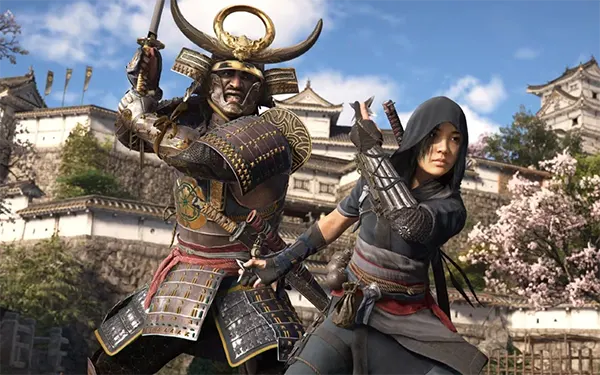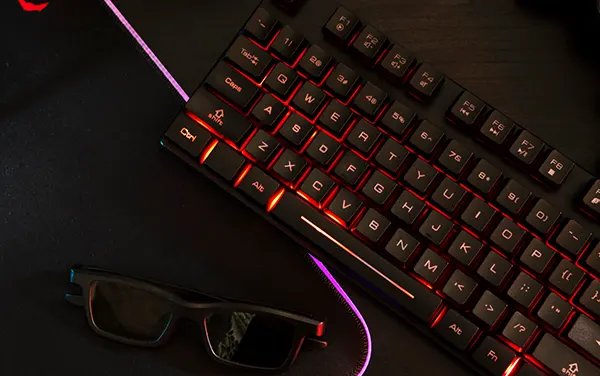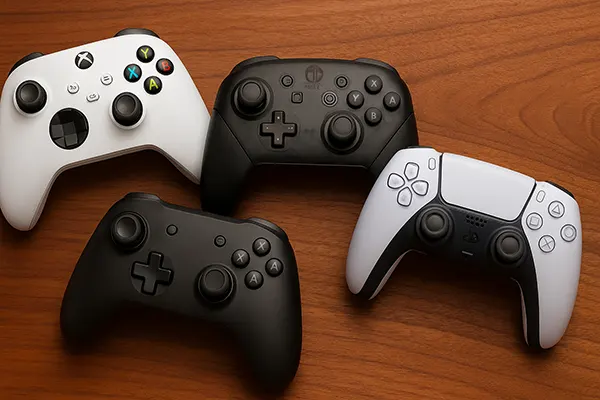
Assassin’s Creed Shadows: A Look at the PC Version — Features, Pros, and Cons
Assassin’s Creed Shadows, the latest entry in Ubisoft’s iconic franchise, transports players to feudal Japan — a long-awaited setting for fans. The PC version offers cutting-edge visuals, refined mechanics, and deeper player immersion compared to its console counterparts. Yet, while the game’s ambition is undeniable, its technical execution and optimisation raise both excitement and debate within the gaming community.
Performance and Visual Quality on PC
One of the strongest aspects of the PC version is its graphical fidelity. Ubisoft leverages the latest Anvil engine updates to deliver breathtaking detail in landscapes, from Kyoto’s bustling markets to serene mountain temples. High-end GPUs such as the NVIDIA RTX 4080 or AMD Radeon RX 7900 XT handle the game at ultra settings smoothly, offering native 4K resolution and ray-traced shadows that elevate realism.
However, mid-range systems may encounter occasional frame drops during dense city sequences or combat encounters. While dynamic resolution scaling helps maintain stability, players with older CPUs might experience occasional stuttering. Ubisoft’s inclusion of a wide range of visual presets and upscaling options, including DLSS 3.5 and FSR 3, ensures accessibility across diverse hardware configurations.
The PC version also benefits from unlocked frame rates and full ultrawide monitor support. These additions significantly improve immersion, particularly during stealth missions and cinematic exploration moments. Nevertheless, the title demands substantial system resources, making SSD installation almost mandatory for smooth loading times.
Customisation and Control Flexibility
Assassin’s Creed Shadows for PC excels in its approach to player control and customisation. The game offers full keyboard and mouse support alongside advanced remapping options, allowing players to fine-tune combat and stealth commands according to their preferences. Gamepad users also enjoy adaptive haptic feedback through compatible controllers, enhancing every sword clash and stealth strike.
PC users can adjust field of view (FOV), motion blur intensity, and camera sensitivity independently — features often missing from console versions. Moreover, Ubisoft Connect’s cloud synchronisation ensures that progress and settings are retained seamlessly across multiple systems. This flexibility demonstrates the publisher’s growing awareness of the PC community’s expectations.
Still, a few interface elements remain better optimised for controller input, particularly menu navigation. Ubisoft has addressed similar feedback in earlier titles like Assassin’s Creed Mirage, suggesting that post-launch patches will further refine these small inconsistencies.
Gameplay Innovations and Mechanics
The narrative introduces two protagonists — Naoe, a skilled shinobi, and Yasuke, an African samurai based on historical accounts. This dual-character approach mirrors Assassin’s Creed Syndicate’s design but with a stronger focus on cultural authenticity. Each character’s playstyle diverges significantly: Naoe excels in stealth and parkour, while Yasuke delivers powerful melee combat with distinct weapon sets.
The PC version enhances these mechanics through smoother frame pacing and reduced input latency. Combat responsiveness is notably improved when played at higher frame rates, giving players more precision during counterattacks and stealth assassinations. Additionally, AI behaviour benefits from increased CPU threading, resulting in more intelligent enemy reactions and adaptive patrol routes.
While Shadows does not reinvent the series formula, its combination of refined stealth, exploration, and open-world interaction provides a balanced experience. The crafting and gear progression systems feel more grounded, eliminating unnecessary grind mechanics that previously burdened titles like Odyssey and Valhalla.
World Design and Historical Depth
Feudal Japan serves as the most requested setting in Assassin’s Creed history, and the PC version showcases its intricate beauty. Ubisoft’s attention to historical architecture, from Edo-period fortresses to rice terraces, reflects extensive research and cultural consultation. Day-night cycles and dynamic weather effects bring the environment to life, directly influencing stealth visibility and enemy behaviour.
Beyond aesthetics, the world offers a wealth of interactive depth. Players can blend into crowds, meditate at shrines for minor stat boosts, and participate in political intrigue through branching dialogue systems. Such features reward exploration rather than simple map completionism, providing a richer narrative connection.
Yet, the game’s world density occasionally feels overwhelming, especially with frequent side missions and collectible prompts. For some, this may evoke fatigue similar to Valhalla’s vast scale, though the improved quest tracking system partially alleviates the issue.

Technical Stability and Optimisation
As of 2025, Ubisoft continues to refine Assassin’s Creed Shadows with ongoing updates targeting stability and compatibility. The launch build received mixed feedback for memory usage spikes and minor shader compilation hitches, yet subsequent patches have addressed most critical bugs. The publisher has also integrated a benchmark tool, enabling players to test system performance before diving into gameplay.
Temperature regulation and power draw remain high during extended sessions, particularly at 4K with ray tracing enabled. However, enabling frame generation technologies or reducing shadow quality provides noticeable relief without major visual sacrifices. Ubisoft’s technical transparency through patch notes helps maintain community trust and informed optimisation decisions.
It’s worth noting that the game supports DirectX 12 exclusively, benefiting multi-core processors and enhancing texture streaming. Players using legacy operating systems like Windows 10 may experience limited performance gains compared to Windows 11 builds optimised for newer drivers.
Pros and Cons of the PC Version
Pros: Exceptional graphics, vast customisation options, refined dual-character gameplay, and immersive historical setting. The inclusion of modern upscaling technologies ensures scalability across various system tiers. Moreover, continued updates demonstrate Ubisoft’s long-term support commitment.
Cons: High hardware requirements, occasional stuttering on mid-range PCs, and UI design that still leans towards controller navigation. Some gameplay elements, though polished, repeat familiar patterns from earlier entries, reducing the sense of novelty for veteran players.
Ultimately, Assassin’s Creed Shadows for PC stands as one of the most ambitious and visually stunning entries in the series. While not flawless, it exemplifies Ubisoft’s technical evolution and respect for historical authenticity, providing an engaging experience for both newcomers and long-time fans alike.
Popular articles
-
 How Foot Keyboards and Pedal Controllers A...
How Foot Keyboards and Pedal Controllers A...Foot-based input devices have moved from experimental …
-
 Evolution of PC and Console Controllers in...
Evolution of PC and Console Controllers in...The past two years have reshaped how …
-
 Assassin’s Creed Shadows: A Look at the PC...
Assassin’s Creed Shadows: A Look at the PC...Assassin’s Creed Shadows, the latest entry in …
